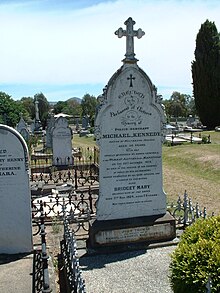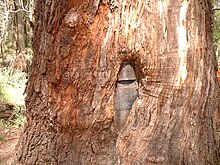
Benalla is a small city located on the Broken River gateway to the High Country north-eastern region of Victoria, Australia, about 212 kilometres (130 mi) north east of the state capital Melbourne. At the 2021 census the population was 9,316.
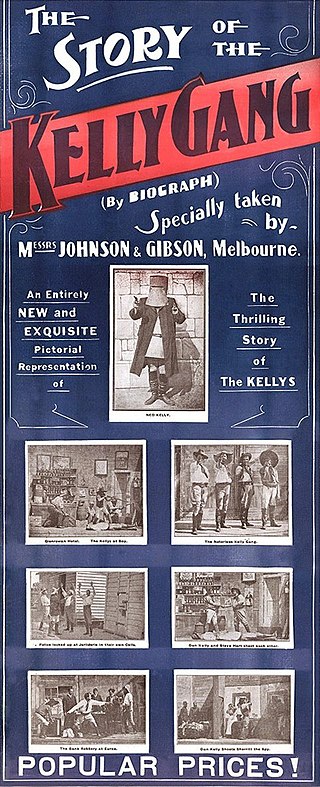
The Story of the Kelly Gang is a 1906 Australian Bushranger film directed by Charles Tait. It traces the exploits of 19th-century bushranger and outlaw Ned Kelly and his gang, with the film being shot in and around Melbourne. The original cut of this silent film ran for more than an hour with a reel length of about 1,200 metres (4,000 ft), making it the longest narrative film yet seen in the world. It premiered at Melbourne's Athenaeum Hall on 26 December 1906 and was first shown in the United Kingdom in January 1908. A commercial and critical success, it is regarded as the origin point of the bushranging drama, a genre that dominated the early years of Australian film production. Since its release, many other films have been made about the Kelly legend.

Edward Kelly was an Australian bushranger, outlaw, gang leader and convicted police-murderer. One of the last bushrangers, he is known for wearing a suit of bulletproof armour during his final shootout with the police.

Mansfield is a small town in the foothills of the Victorian Alps in the Australian state of Victoria. It is approximately 180 kilometres (110 mi) north-east of Melbourne by road. The population around Mansfield was 4,787 as at the 2016 census. The town itself has 3410 persons.
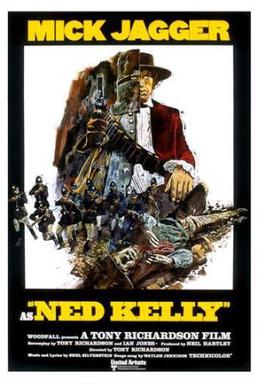
Ned Kelly is a 1970 British-Australian biographical bushranger film. It was the seventh Australian feature film version of the story of 19th-century Australian bushranger Ned Kelly, and is notable for being the first Kelly film to be shot in colour.

True History of the Kelly Gang is a novel by Australian writer Peter Carey, based loosely on the history of the Kelly Gang. It was first published in Brisbane by the University of Queensland Press in 2000. It won the 2001 Booker Prize and the Commonwealth Writers Prize in the same year. Despite its title, the book is fiction and a variation on the Ned Kelly story.
The Walsh Street police shootings were the 1988 murders of two Victoria Police officers: Constables Steven Tynan, 22, and Damian Eyre, 20.
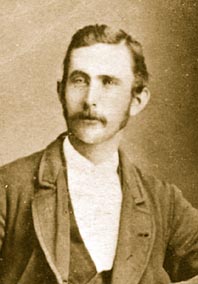
Joseph Byrne was an Australian bushranger of Irish descent. A friend of Ned Kelly, he was a member of the "Kelly Gang" who were declared outlaws after the murder of three policemen at Stringybark Creek. Despite wearing the improvised body armour for which Ned Kelly and his gang are now famous, Byrne received a fatal gunshot during the gang's final violent confrontation with police at Glenrowan, in June 1880.

The Kelly Gang is an Australian feature-length film about the Australian bush ranger, Ned Kelly. The film was released in 1920, and is the second film to be based on the life of Ned Kelly, the first being The Story of the Kelly Gang, released in 1906.

Catherine Ada Kelly was the younger sister of famous Australian outlaw Ned Kelly.

Greta is a district in Victoria, Australia, located east of Benalla, in the Rural City of Wangaratta. At the 2016 census, Greta had a population of 107 and Greta West had a population of 162.

Aaron Sherritt was an associate of the gang of outlaws led by Ned Kelly in Victoria, Australia.

Daniel Kelly was an Australian bushranger and outlaw. The son of an Irish convict, he was the younger brother of the bushranger Ned Kelly. Dan and Ned killed three policemen at Stringybark Creek in northeast Victoria, near the present-day town of Tolmie, Victoria. With two friends, Joe Byrne and Steve Hart, the brothers formed the Kelly Gang. They robbed banks, took over whole towns, and kept the people in Victoria and New South Wales frightened. For two years the Victorian police searched for them, locked up their friends and families, but could not find them. Dan Kelly died during the infamous siege of Glenrowan.

Stephen Hart was an Australian bushranger, a member of the Kelly Gang.

The handwritten document known as the Jerilderie Letter was dictated by Australian bushranger Ned Kelly to fellow Kelly Gang member Joe Byrne in 1879. It is one of only two original Kelly letters known to have survived.
When the Kellys Were Out is a 1923 Australian feature-length film directed by Harry Southwell about Ned Kelly. Only part of the film survives today.

Ned Kelly was a 19th-century Australian bushranger and outlaw whose life has inspired numerous works in the arts and popular culture, especially in his home country, where he is viewed by some as a Robin Hood-like figure.
J. J. Kenneally was an Australian journalist and trade unionist. An early populariser of Australian bushranger Ned Kelly and his gang via his book The Inner History of the Kelly Gang and Their Pursuers (1929), he was also one of the original members of the country's Labor Party and later formed his own party.

True History of the Kelly Gang is a 2019 bushranger film directed by Justin Kurzel, written by Shaun Grant, and based upon the 2000 novel of the same name by Peter Carey. A fictionalised account of the life of bushranger and outlaw Ned Kelly, the film stars George MacKay, Essie Davis, Nicholas Hoult, Charlie Hunnam and Russell Crowe.

In 1879, Australian bushranger and outlaw Ned Kelly devised a plan to create bulletproof armour and wear it during shootouts with the police. He and other members of the Kelly gang—Joe Byrne, Steve Hart, and brother Dan Kelly—had their own armour suits and helmets crafted from plough mouldboards, either donated by sympathisers or stolen from farms. The boards were heated and then beaten into shape over the course of several months, most likely in a crude bush forge and possibly with the assistance of blacksmiths. While the suits successfully repelled bullets, their heavy weight made them cumbersome to wear, and the gang debated their utility.


